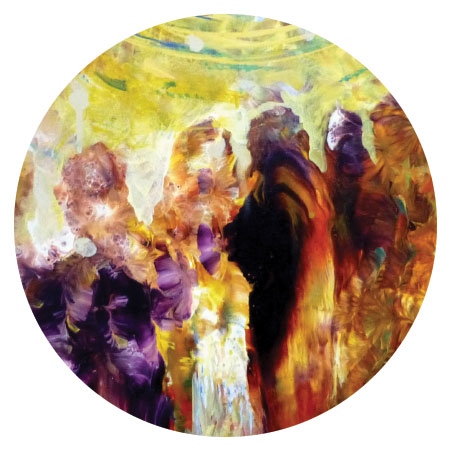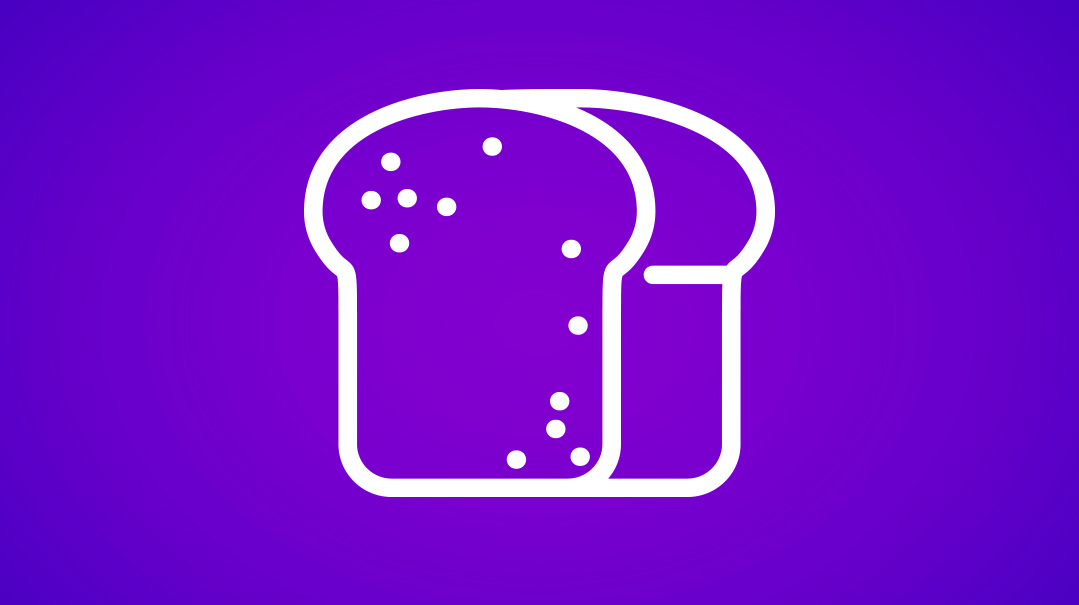A Seat at Hashem’s Table

With the right focus, eating won't diminish us, but elevate us

"How come people need to ask, ‘Did anyone notice if I bentshed? I’m not sure if I did,’ ” Rav Noah Weinberg ztz”l used to ask, “but they never have difficulty remembering if they witnessed last night’s thunderstorm?”
Rav Noah’s comment brings to mind the Kotzker Rebbe’s puzzlement at the fact that our yiras Shamayim is largely unaffected by Bircas Hamazon, while the concept of Grace after Meals served as a highly effective kiruv tool in Avraham Avinu’s renowned inn. After serving his guests, Avraham would encourage them to thank not him, but their Creator, the true Source of the food they’d eaten.
It’s noteworthy that the mitzvah of Bircas Hamazon is the only brachah (with the exception of Bircas HaTorah, according to many opinions) that’s d’Oraisa. Its format also sets it apart from other brachos, as it’s composed of four different brachos and numerous paragraphs.
The first time I taught Bircas Hamazon to a class of newcomers to Yiddishkeit, they all wanted to know why it was so lengthy. “How long,” they asked, “does it take to say ‘thank You’ for the food we’ve eaten?”
Even a casual glance at the text of bentshing reveals that it covers many more topics than food. We thank Hashem for the mitzvah of milah, for Yetzias Mitzrayim, and for Torah and mitzvos in general. We appeal to Hashem to restore Yerushalayim and the Beis Hamikdash.
Clearly, there’s a deeper dimension to Bircas Hamazon.
Cause and Effect
The effect bentshing has is also vaster than we would imagine. The Sefer Hachinuch uncharacteristically offers a wondrous segulah. He says, “I have a tradition from my teachers that anyone who is conscientious about reciting Bircas Hamazon will be provided with dignified sustenance throughout his life.”
The Arizal writes, in the name of the Zohar, that it’s important to bentsh with great joy, and in that merit, Hashem will grant a person sustenance with joy.
Rav Mattisyahu Salomon shlita relates that before he became mashgiach in Lakewood, he spent some time observing how Rav Shach ztz”l advised the many individuals who came to him for counsel.
Aside from individual guidance, Rav Shach offered one consistent piece of advice to every petitioner. He told them that reciting Bircas Hamazon carefully, from a bentsher, was the key to success in all areas, and especially for livelihood and long life.
Let’s pause for a moment to consider the import of this segulah. As the Shvilei Pinchas puts it, people try all kinds of methods and omens, rational and irrational, to increase their income. Yet they overlook this readily available segulah: Recite the words of Bircas Hamazon slowly and joyfully, and Hashem will respond accordingly!
What’s the rationale behind the segulah of Bircas Hamazon?
Let’s begin by examining the topic of food. At first glance, eating seems to be a wholly physical activity. The variety of foods, the myriad ways to prepare them, and the assortment of taste receptors in our mouths make eating into one of the great material pleasures in This World.
On the other hand, food has a relationship with the neshamah as well. Deprivation of food can cause death, and what is death but the parting of the guf and the neshamah? If food keeps the neshamah inside the guf, it must have a spiritual dimension.
Rav Pincus points out that eating is a unique opportunity to experience the reality of Hashem’s Presence. A moment ago, the person felt weak and lifeless; now, after a few bites of food or a few sips of a drink, he’s revitalized (as any coffee drinker can testify!). No philosophical discussion or theological arguments needed — he automatically feels connected to the Chai HaOlamim, the Giver of Life. It’s as if food catapults us directly into Hashem’s embrace.
Thus for many people, the most frequent point of encounter with Hashem takes place not in the beis haknesses or beis medrash, but at their very tables! This concept brings to mind the words of Rabi Shimon in Pirkei Avos (3:3): Three who eat together at the same table and speak in Torah, it is as if they have eaten at the table of HaKadosh Baruch Hu.
Remember the Source
But there’s a catch. Or two. While food can connect us to our Creator, it can also distance us. Often, we don’t do well with delicacies and luxuries. We forget their Source, create ever-increasing material expectations, and allow our spiritual sensitivities to become dull from disuse.
This is why the Torah cautions us immediately after giving the mitzvah of Bircas Hamazon: “Take care… lest you eat and are satisfied… and your heart becomes haughty and you forget Hashem… and you say to yourself, ‘It was my might that made me all this wealth!’ ” (Devarim 8).
The second catch has more to do with the quest for food than eating itself. The pursuit of parnassah can consume an individual and turn his life into an illogical absurdity. Rav Nadav, in a classic lesson to his seminary students, would express it this way: Imagine meeting someone who’s working overtime to provide for his family. If we were to ask him why he’s working so hard, he would reply, “What do you mean? I have to work because I need to eat!”
If we then asked him why he needs to eat, he’d answer, “What do you mean? I have to eat in order to have strength to work!” This mindless circle of working to eat and eating to work renders life virtually meaningless.
What can break this cycle? Only the knowledge that there’s a higher purpose in eating, that we eat not for the sake of eating, but because we need energy and well-being in order to serve Hashem.
If we can maintain the awareness that our food is from Hashem and that our food is for Hashem, then our eating will elevate, rather than diminish, us. This is the mission of Bircas Hamazon.
Viewed from this perspective, the passages of Bircas Hamazon no longer seem lengthy and divergent, but pointed and significant. They contain the power to transform a moment of physical gratification into a point of connection with our Creator. How can we tap into this power?
Access the Potential
The mitzvah of Bircas Hamazon is given in parshas Eikev: “V’achalta, v’savata, u’veirachta es Hashem Elokecha — You shall eat and you shall become satiated and you shall bless Hashem your G-d” (Devarim 8:10).
The Maharal explains that the phrase “You shall become satiated” alludes to the fact that Hashem has satiated us fully and entirely — He has given us not only food, but the Land, not only the Land, but Yerushalayim and the Beis Hamikdash, and still more.
Rav Hirsch points out that a person does not turn his back on Hashem all at once. Rather, he becomes estranged from Him by degrees, and this happens most often when he feels that he has everything he needs. This is why we need a constant reminder every time we eat.
Each time we bentsh, the words force us to confront our dependence on our Creator, and the magnificence of His largesse. Thus we remember that our food is from Hashem.
Rav Daniel Glatstein, based on the Chasam Sofer, offers a deeper reason for our mention of much more than the food we have eaten: Food has no inherent value! If we thank only for the food, we forget the larger picture. A Jew’s life is so much broader: There’s bris milah! Yetzias Mitzrayim! Eretz Yisrael! Torah! We don’t work to eat and eat to work. Rather, we work to eat, and we eat in order to serve our Creator.
Each time we bentsh, we once again confront the ultimate purpose of the physical world, and the many opportunities where we can use our energy for avodas Hashem. Thus we remember that our food is for Hashem.
We can now understand the comment of the Chiddushei Harim on the mishnah about the group of three who eat together at the same table and engage in Torah study. The essence of Bircas Hamazon, he explains, is Torah, and accordingly, it brings Hashem to our table.
Even Deeper
The Arizal writes esoterically that the act of eating serves to extract the nitzotzos, sparks of holiness that were dispersed among the different classes of creation — domeim, tzomei’ach, and chai, inanimate objects, plant life, and the animal kingdom. He explains that these categories form a hierarchy, and that each class is nurtured from the class below. Thus plants derive nourishment from the soil, animals feed off plants, and man eats animal meat.
As the soil and its minerals become incorporated in the plant kingdom, the sparks contained there are elevated, as they now belong to a higher category. If these plants are eventually ingested by an animal, these sparks are raised to an even higher purpose. Finally, when man slaughters the kosher animal and eats its meat, he also absorbs within himself the elements of plant and mineral life that were previously part of that animal.
This is the ultimate purpose of this system: When man uses the food he has eaten to serve Hashem, he will rectify and elevate all of creation.
In fact, Panim Yafos writes that all elements of creation naturally yearn to rise to a higher level. Thus Hashem created the world in a way that soil is universally available for plants, and that plants proliferate almost everywhere on earth so that they’re easily accessible to animals. (Man’s food, too, would have been easily accessible had he not sinned in Gan Eden.)
Shvilei Pinchas explains, based on the sefer Yagel Yaakov, that the mishnah’s reference to “three who ate together at the same table,” is an allusion to the three classes of creation — the domeim, tzomei’ach, and chai — which are found at man’s table, because, as we’ve explained, they’re incorporated into his food. He suggests that the structure of Bircas Ha-mazon corresponds to these three realms.
The first brachah, Bircas Hazan, which concludes with the words, “He nourishes all,” corresponds to the domeim, because all nourishment is sourced from the earth.
The second brachah, Bircas Haaretz, which gives thanks for the Land of Eretz Yisrael, reflects plant life, because it’s there that we’re able to fulfill the mitzvos related to agriculture, such as terumah and maaser.
Lastly, the third brachah, Bonei Yerushalayim, relates to animals, for it was in Yerushalayim that we were able to bring animal sacrifices in the Beis Hamikdash.
May the inspirations derived from this article serve as an illui for the neshamah of my father z”l, Rav Shlomo Leib ben Chaim Yisroel, who was greatly devoted to the mitzvah of Bircas Hamazon.
Mrs. Shani Mendlowitz is menaheles of Bais Yaakov Seminary of Montreal, and a popular lecturer for women.
(Originally featured in Family First, Issue 718)
Oops! We could not locate your form.



